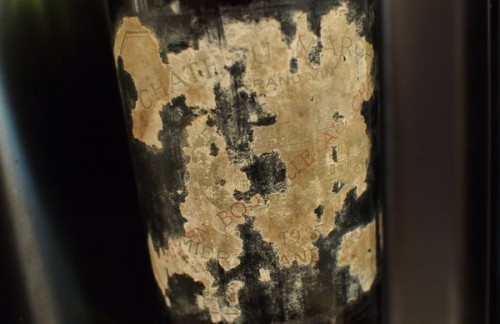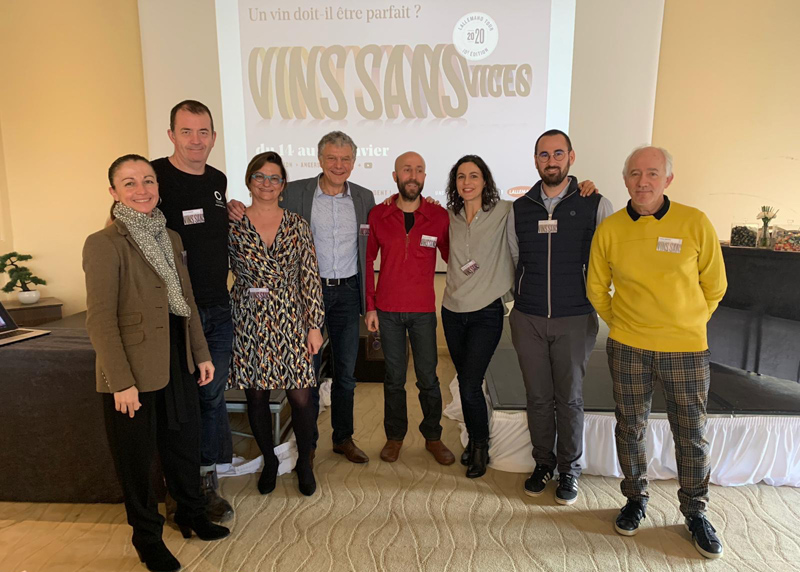
Yesterday I popped into The Sampler on Upper Street, Islington, to try some of their ‘icon’ wines (and a few others). This time every year they put on some lovely older wines, as well as some newer super-expensive or rare wines. It’s one of those rare opportunities to try these sorts of bottles. My write-ups from previous years are here, here, here and here.
The two stand-outs yesterday were a pair of old Clarets. A 1937 Margaux and a 1966 Lafite. What are we to make of old wines? If I put these wines blind in a line up with other bottles without giving you any indication of what ‘s in the line-up, would you pick these out as astonishing? Is the entire quality of these wines evident in the glass without any supplementary information?
I think this is an important question, and it’s one I’ve thought about a lot. My view? You lose something tasting old wines blind. You don’t lose everything, but an important part of the perception of older wines is knowing where they came from and which vintage they were born in. Time and place.
It’s not that I’m arguing we should pretend that old wines are better than they are. We can’t give them a free pass, just because they are old. It’s just that to understand these wines properly, you need to know what they are. And what they are matters: for example, with art, knowing that a Rembrandt is a Rembrandt makes a big difference, as research using brain-scanning has shown.

People spend valuable resources of money and time going to galleries to view famous paintings. To these people, it matters that these paintings are the originals, even though it would be possible to create reproductions that all but the leading experts couldn’t tell from the real thing. Fill a gallery with near-perfect reproductions of the world’s most celebrated paintings, and no one would bother visiting. This shows that the experience they are having of that painting is more than simply the sensory (visual) one. Something else is contributing to their perception, and it must stem from their belief that what they are seeing is the original, and their knowledge of that painting and/or artist.
To a degree this is the same with old wine. It isn’t just about the sensory experience that comes from the wine’s flavour properties. It has to do with the fact that we know where and when this wine was born, and we know supplementary information about it that helps us derive pleasure from drinking it. I’m thrilled when I get to try a properly old wine, even if the wine isn’t, in mere flavour terms, the most perfect experience I have ever had.
Peynaud is quoted as saying that great wines, tasted blind, often disappoint. It is true. Rather than suggest the emporer has no clothes, though, we should celebrate the fact that wine is more than just a liquid with flavour. There’s a cultural significance and richness. And old wines also allow us to connect with a vanished time in a very intimate way.
So, to the specifics. 1937 was a difficult vintage in Bordeaux, apparently, in a decade full of dreadful vintages (1934 was the single stand-out year). It had a hardness and greenness when young, and took an age to come round, as this interesting article testifies. This 1937 Margaux was just lovely. Truly lovely.
The Lafite came from the highly regarded 1966 vintage. This is back in the day when there were more properly bad vintages in the region than today. It was impressive, and still quite youthful, but a little hard to love. More of an intellectual wine.
Château Margaux 1937 Margaux, Bordeaux
This wine shows some maturity, as you might expect, with hints of earth and iodine, but also mellow cherry fruit. The palate has lovely texture with fine-grained tannins and plenty of fruit: it’s really pure for such an old wine. But there’s also some grippy tannin under the fine cherry fruit, with just a bit of earthiness. So lovely, and far too nice to spit. 96/100
Château Lafite-Rothschild 1966 Pauillac, Bordeaux
Earth, spice and herbs on the nose: quite fine with nice savoury spiciness. Pure and fresh on the palate. Still quite tannic but with lovely red fruits and fresh acidity. Surprisingly taut, this seems like it has plenty left to reveal. Vivid with a fresh finish. 95/100
Find these wines with wine-searcher.com
3 Comments on 1937 Margaux and 1966 Lafite: what are we to make of old wine?
The version of the Emperor’s new clothes that I read to my five year son has the tailors asking for more and more money from the Emperor to produce their fantastic clothes which when scrutinised more objectively, do not stand up to the value being put on them… I struggle not to see at a parallel with Bordeaux – at least in the noughties.
Hi Jamie
A tip of the hat again. I think you are right that knowing about the wine is a part of its appreciation, precisely the way an original painting is more than the proper arrangement of its paint molecules: a copy will still be a copy. And the point is not the ability to tell the original from the copy, but that the richness of experience is deeper when contemplating the original. So it is us, not the object.
Hungarian wine journalist (and now turned winemaker in Tokaj) Laszlo Alkonyi, arguing against blind tasting, wrote: “Tasting a wine blind is like kissing a lady blind-folded” – which may be exciting (to some) but most of us would probably argue that a different arrangement may give a better experience. I do not believe there is a parallel here with Andersen’s tale.
That you would be able to taste the 1937 Margaux out of a line up of other 78 year old wines blind is testament to its quality (granted it is at the final 10% of its drinking life).
Does not matter how inexperienced a wine taster you are, you could not say this say the same about. say the Grange or the La Turque that the Sampler is offering on tasting when they are at the same age.